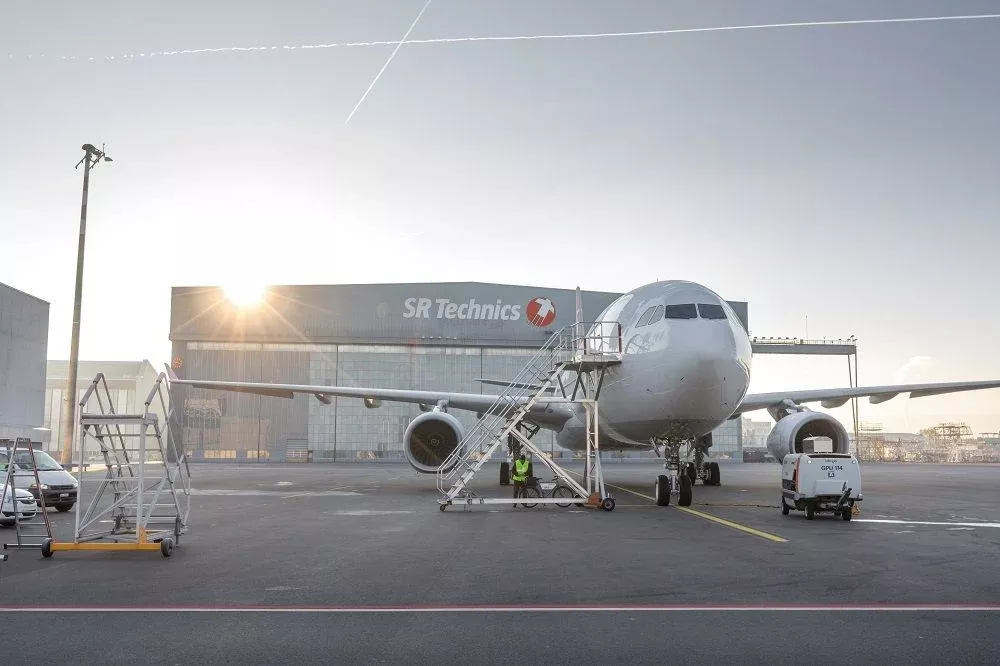
Companies like SR Technics are holding more inventory to offer more services such as parts exchanges to customers.
SINGAPORE--Supply chain instability is leading to more companies in the commercial aftermarket stocking larger quantities of parts while refining their long-term procurement strategies.
In a panel on the topic of building supply chain resilience at MRO Asia-Pacific in Singapore last week, OEM, airlines and MRO companies discussed the issue of component inventory strategies in the wake of supply chain disruption and how the dynamic is changing in the face of supply chain constraints and longer lead-times.
“We are holding more inventory but cautiously so,” says Jingyuan Sun, VP of customer account management at Switzerland-based MRO provider SR Technics. The company’s engine maintenance specialisms leaves it exposed to an engine MRO supply chain that has been heavily disrupted over the past 18 months. “As we all know from the engine supply chains, there are a lot of critical parts with long lead times from the OEMs. That also leads to us holding more inventories on those parts in particular, in order to offer exchanges to our customers,” Sun says.
James Bennett, chief commercial officer at UK-headquartered parts repair specialist and supplier AerFin, says parts exchanges--where an operator buys a part for an exchange fee before trading an unserviceable part removed from an aircraft--contribute to around 50% of its overall revenues in the Asia-Pacific region. “This much higher than in the U.S. and Europe,” he says of the number of exchanges.
Overall, he believes there may have to be a different approach for aftermarket partnerships in the aftermarket supply chain towards supply used serviceable materials. “Up to now, you could argue that we acquire an asset and have traded on an ad-hoc basis. If we’re serious about true partnerships, we need to be moving into a fulfilment type relationship where we work with an airline or an MRO and step up and commit to guaranteed service levels on things like engine piece parts which of course is challenging," says Bennett.
“We’ve had to cultivate and manage relationships both upwards and downwards and that enables us to find the parts we need,” notes Katherine Rivera, AVP at Philippine Airlines. “It is really closely linked to collaboration between the airline and our suppliers and vendors and finding the sources to keep our parts available,” she says, adding that the boom in passenger travel is a double-edged sword not just for carriers but also their suppliers tasked with supplying parts.
Daniela Serafini, Airbus VP of customer services and head of Flight Hour Services, says the OEM has localized some production and repairs as a way of mitigating against disruption to its parts supply. “This is to avoid parts circulating around the world and allowing us to be able to bring them back as soon as possible,” she says.
Aziz Yunus, head of component and warehouse services at Malaysia-based Asia Digital Engineering, says the company has looked at technology such as artificial intelligence to determine which levels of stocking the company requires. “Technology has the potential to better forecast demand and that is what we are looking for,” he says.
The recent uncovering of undocumented parts linked to UK-based broker AOG Technics by several airlines including United, Southwest and Virgin Australia has led to carriers checking inventories to ensure parts meet certification requirements. Philippine Airlines’ Rivera says the carrier undertook a thorough review of its records and did not find links to the undocumented parts.
SR Technics confirmed it has also never bought parts from AOG Technics. “We have a very robust quality system starting from auditing the supplier, who is receiving inspections during shop visit in process inspections and final off-wing inspections including the last paperwork checks.”
